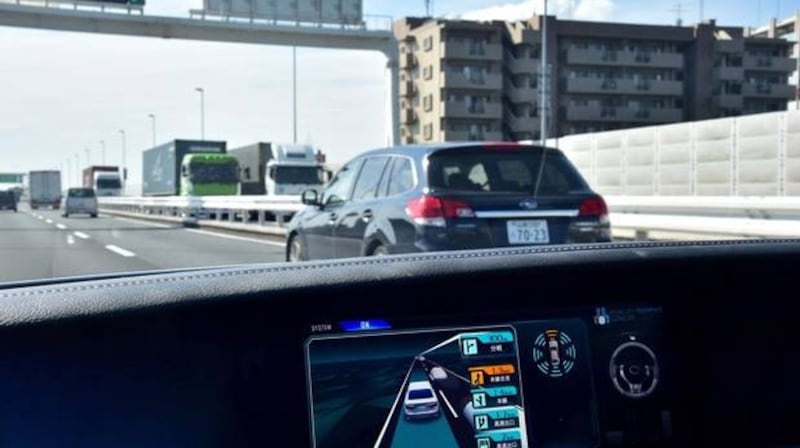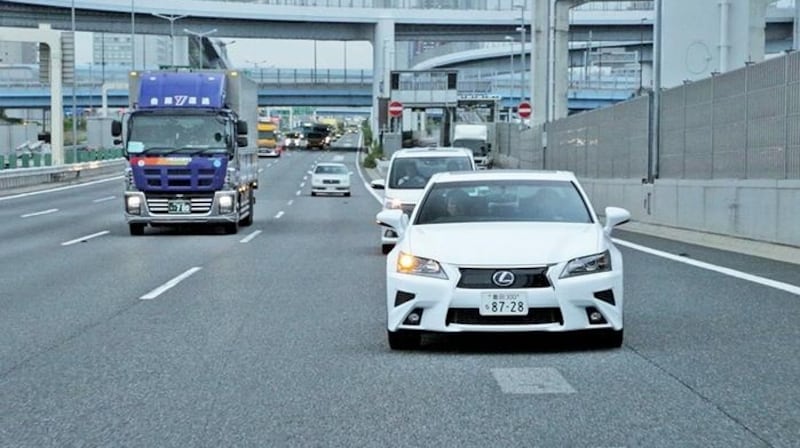“Tech revolution” is an over-used term, but what’s happening in the motoring world right now is truly monumental. Not since the first car took to the road in 1879 has there been a bigger revolution in technology leap. Setting aside the convenience, the potential cost-savings and social impacts, driverless cars could save as many lives as any potential cure for cancer.
Safety experts estimate 90 per cent of fatalities on our roads can be attributed to driver error. Last year 1.3 million people died on the world’s roads. A moment’s distraction can end in tragedy. Remove that potential and the savings in terms of lives and medical costs are enormous.
In the race to driverless car technology Toyota is already on the road. The Japanese car giant has been working for several years on autonomous driving technology and now has test cars on the streets of Japan.


With a target of 2020 for autonomous vehicles on the streets of Tokyo - coinciding with the city hosting the Olympic Games - we got the chance to ride in a self-driving Lexus GS on the city's busy motorway network.
Using a combination of laser, radar, sensors and cameras the GS doesn’t look different to any other model, but inside it features an extra button on the steering wheel that can be engaged on the motorway.
Look no hands
Once in operation and heading to the destination entered in the Sat-Nav, the car takes over everything from steering, braking, acceleration and even indicating and changing lanes. Called Highway Teammate it monitors the flow of traffic in other lanes and will change to lanes moving faster. It also turns off at the correct junction as per Sat-Nav destination.
It can be unnerving at first, weaving down the on-ramp towards trucks and cars hurtling by at motorway speeds. The indicator flickers on and as you scan the road - and pray - the car changes its pace to match the traffic on the inside lane, spots a gap and seamlessly joins the traffic.
Further on and a sharp combination of S-bends could catch the lane keeping system, but it slows to take the corners comfortably and it even changes lane to overtake a slow-moving truck ahead.
The car uses GPS to get a precise location of the car and combines this with sensors that can locate the car to an accuracy of 10cm in latitude and 50cm in longtitude.
Unnerving at first
The promise is that we will be checking emails, watching Netflix or taking naps as the car gets on the mundane commute. First impressions from our time in the self-driving Lexus suggests it will be a while before most of us will be comfortable enough to take our eyes off the road.
Challenges ahead
This is only the first stage of the revolution and there are huge outstanding issues for such cars. For a start there is the consideration over whether to alert others that a car is self-driving, in case other motorists take it upon themselves to "bully" the car on the road. Then there is the enormous moral challenges about programming what a car should do when a crash is inevitable. In a choice between hitting a pedestrian or veering into a wall or oncoming traffic, who makes the decision? Such deep issues are currently being discussed in forums at the United Nations.
It’s likely to be 2030 before all these are ironed out. Similarly we need a more integrated traffic management system. The hope is that with the combination of traffic systems and autonomous vehicles we can reduce road fatalities by up to 50 per cent.
In the interim driverless technology will arrive in stages. The first will take the form of the Lexus GS we travelled in, operating autonomously on motorways, where there is a limited range of potential challenges. Move to suburban and urban routes means sharing the road with a multitude of others, with all the consequent risks.
Yet no one working on these challenges regards them as insurmountable. It’s less about technology and more about creating standards and regulations. The motoring world is going to be very different in 20 years and the likes of Toyota are working towards being at the forefront of the revolution. The first stage is likely to arrive by 2020 on Tokyo’s roads.










